Homemade Miso Making at School: Fun, Food, and Learning
Jan 30,2025
Homemade Miso Making at School: Fun, Food, and Learning
Jan 30,2025
We had previously visited the Kome-no-Hana koji [rice malt] outlet in Chigasaki, Kanagawa, as the seasons transitioned between spring, summer, and autumn, and talked with the owner Kumazawa Hiroyuki. On this particular day, Kumazawa was teaching third-year elementary school children at a school in Chigasaki how to make miso. We joined in to watch the class in progress.

The connection between Kumazawa and local elementary schools began several years ago when a nutritionist working at a Chigasaki elementary school visited Kome-no-Hana. The nutritionists at the elementary school were making miso once a year and using it in the school lunches. They had the idea of sourcing their koji locally from Kome-no-Hana as an ingredient in their miso. Through this connection, Kome-no-Hana koji is now used to make miso at several schools in Chigasaki.
Later on, the nutritionists asked Kumazawa whether he would teach elementary school kids how to make miso, rather than the nutritionists just preparing the miso themselves.

“There’s a section in the third-year Japanese language textbook that mentions ‘the soybeans that change their shape’. From this, the kids learn that many foods, like tofu and miso, are produced from soybeans. As part of this education, I visit the schools and teach them how to make miso so that they know first-hand how miso is produced.”
Kumazawa has given classes on miso making at several schools in Chigasaki. On the day we joined him, he had come in to teach third-year students how to make miso.
Kumazawa had prepared bags containing the right amount of steamed soybeans, salt, and koji. Each kid took one set of ingredients and began making miso.
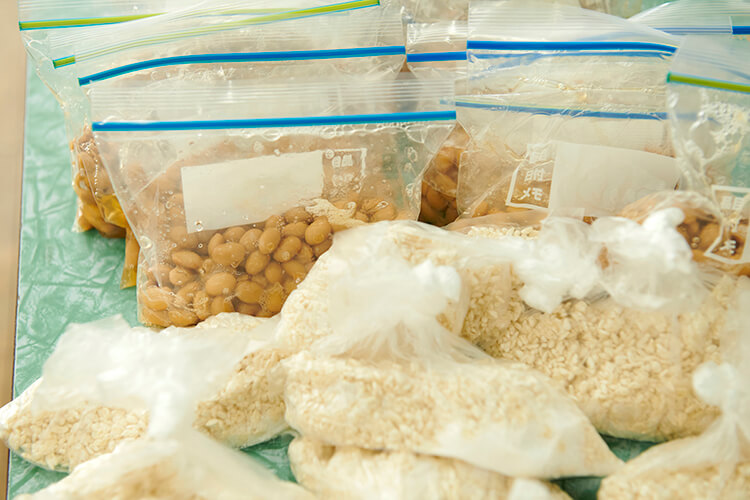
“When I was first asked to give a class on miso making for kids, we were in the midst of the COVID-19 pandemic. So I decided to prepare the ingredients in a way that I would not touch them with my bare hands and that each kid’s miso could be stored individually.”

The day we visited was a day that parents and guardians were let in to observe the class. Both the kids and the parents seemed very interested in the miso ingredients. Kumazawa asked the kids whether they knew what koji was. Two kids energetically raised their hands and said yes. But for the majority of the kids, it was the first time for them to see koji. After Kumazawa encouraged them — “It’s okay to taste a little bit of the koji raw”, they cautiously tasted the koji. Several of the kids looked puzzled, not quite believing that miso could be made from such an ingredient.

Kumazawa instructed the class to first clean off any eraser shavings and debris from their desks. “You wouldn’t want eraser shavings to get into your miso, would you?” he cautioned. He added: “If some of the soybeans spill onto your desk while you mix them, it’s okay to put them back in the bag. The koji mold is very powerful and will definitely create miso for you.” Hearing this, some of the kids react with surprise.

The kids first mix the koji and salt in one bag to make salted koji, which they carefully add to the bag containing the soybeans. The kids all look very serious as they concentrate. Once the koji and soybeans are mixed together, they begin squashing the soybeans firmly by pressing on the bag.
The final step is to write their name on their bag, and the miso making is finished. Kids who finished early help out the kids who are struggling, and the class ended in harmonious atmosphere.
The miso the kids had prepared was collected in a box, which would be stored at the school for three or four months. The next time the kids would see their bags would be when the miso was ready to eat.
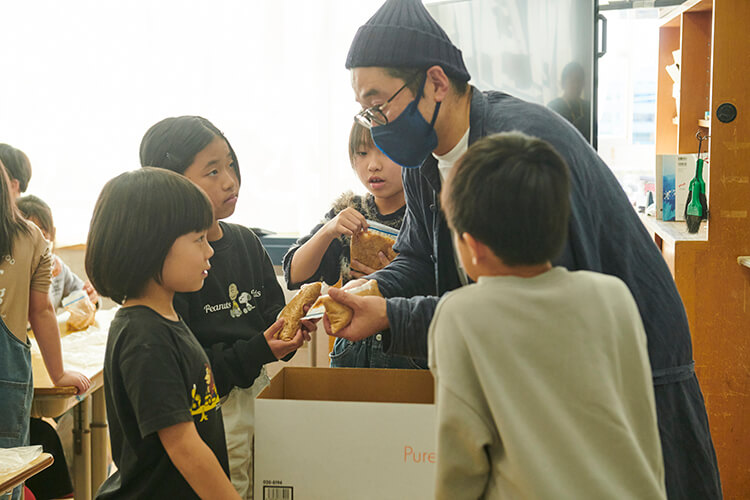
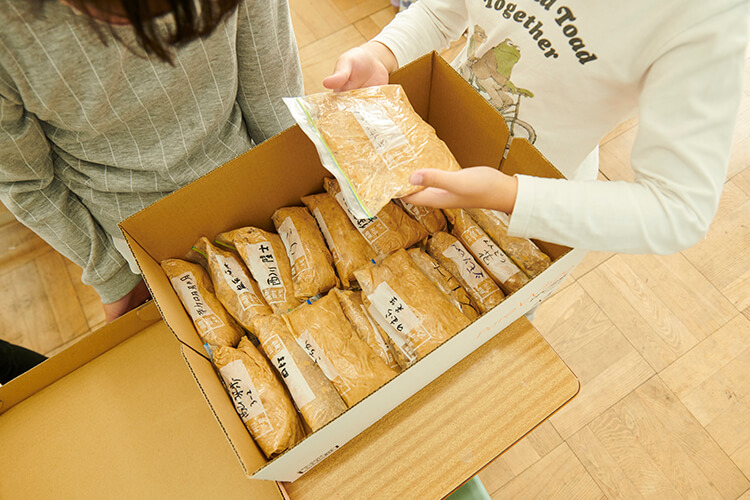
We asked Kumazawa immediately after the class ended about his impressions. “It’s a lot of fun”, he replied with a big smile, as excited kids ran around him.。
“Kids ask questions that really hit the mark, like ‘How should I eat handmade miso?’ or ‘How long can I eat it?’. They are curious about how this miso is different from purchased miso and I can tell they are taking an interest in it, which makes the class worthwhile for me.”
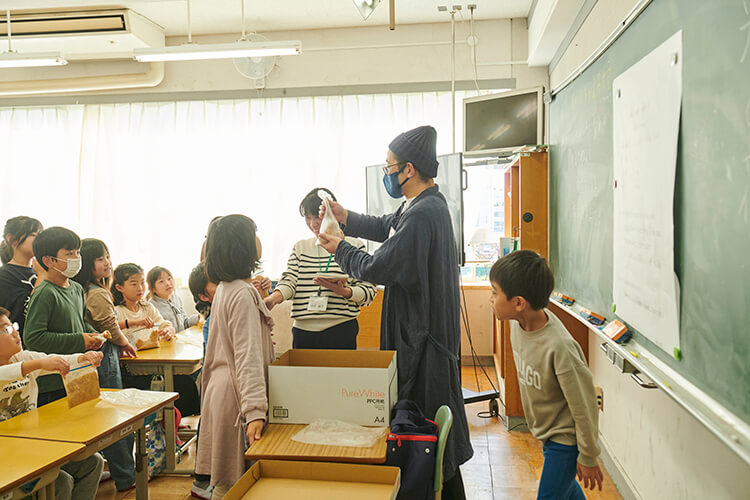
Many of the kids are excited about the finished miso and can’t wait the next few months until it is ready, saying they want to eat the miso as soon as possible. Some families even visit Kome-no-Hana the next day after the class.
“They said that since making miso at school was easy, they wanted to try making it at home. I was delighted to hear that.”
Since opening Kome-no-Hana, Kumazawa has had all kinds of customers visit the outlet, but he says the opportunity to get kids at school to experience koji and teach them about miso making is something extra special.
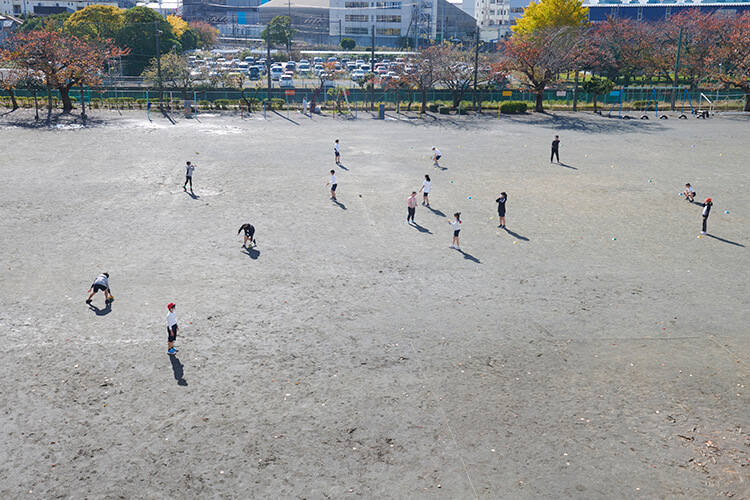
“You can go and look up information that you are interested in. But people don’t really have chances to look into koji on their own. So I’m really pleased to have the chance to talk about koji at events like this. And that’s because it might get kids or their parents interested in koji.”
Kumazawa says he is also looking forward to the day when the miso is ready and is handed back to the kids.
“They get really excited when they see that the ingredients they made have actually turned into miso. I can’t help but smile when I hear them say things like ‘I can’t wait to take it home and let my mom try it’ or ‘She knows I’ll be coming home with miso today, so she’s waiting and preparing to make miso soup’. It’s an invaluable experience for me too.”
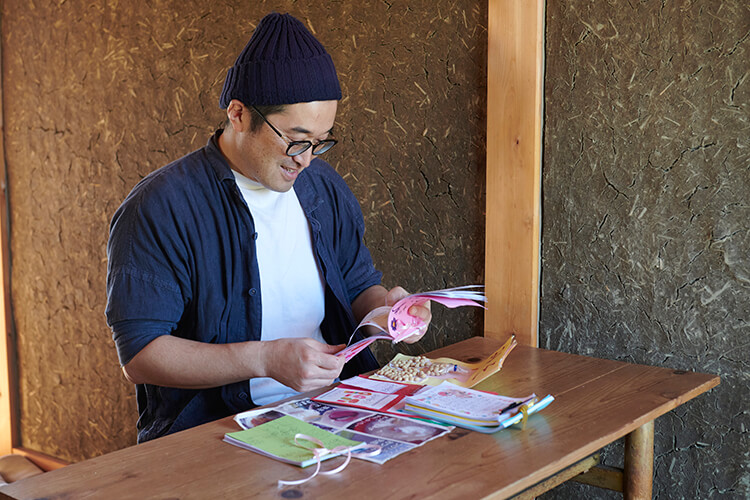
After the class, Kumazawa showed us what he calls his treasures: Impressions of the class written by kids at the elementary schools he has been to so far. Addressed to Kumazawa, the kids’ impressions of the miso making and the finished miso are written in a variety of colors and decorated with pictures.
“I love reading all their comments, like ‘The miso I made turned out to have a gentle taste’ and ‘Everyone in my family said it was delicious and we ate it together’. It makes me happy to imagine them talking about the miso they made with their own hands at the dinner table. It would be amazing if they discussed making miso at home next time.”
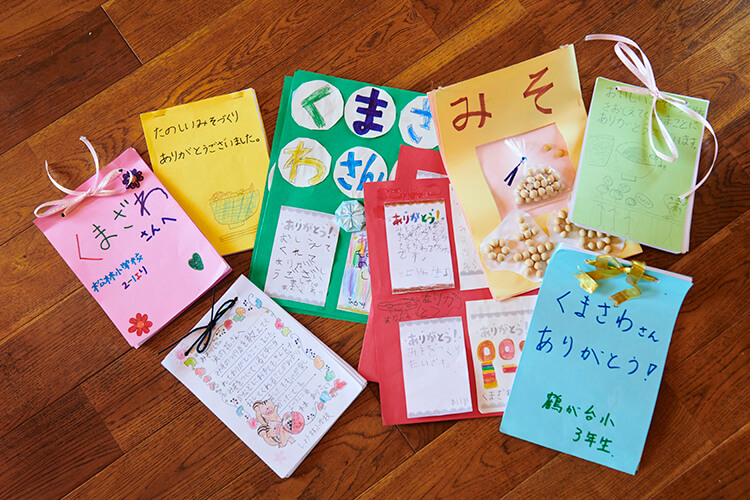
More than anything, what thrills Kumazawa is that the number of kids who have made miso themselves is slowly increasing. 。
“It’s my own little fantasy, [laughs] but I would be so happy if these classes led to people saying: ‘I don’t know why, but there are a lot of families in Chigasaki that make their own miso’ or ‘In Chigasaki, fewer kids catch colds and many live very healthy lives there’ or ‘The reason Chigasaki has a long healthy life expectancy appears to be its culture of homemade miso’.
“It may only be miso, but habits and culture arise and expand from the experiences we have as kids. I think about this every time I see the kids get excited about miso.”
Kumazawa started Kome-no-Hana with the idea that it would be nice to have a community with a koji shop where the local people make their own miso and soy sauce and lead enriched lives. It appears that his idea, which dovetails with the kids’ miso experiences, will expand even further.
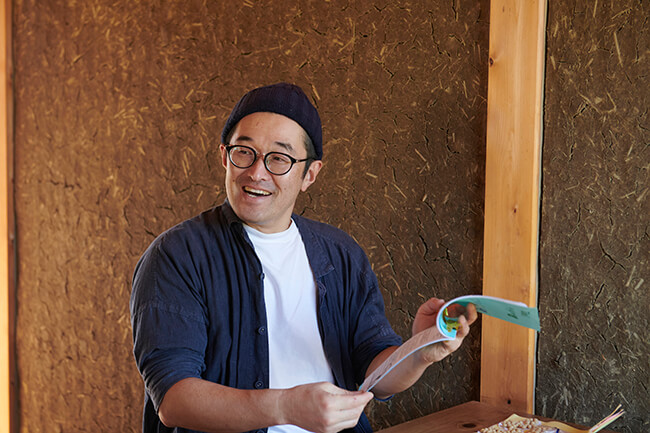
Kome-no-Hana produces and sells koji, salted koji, and amazake and offers miso and soy sauce-making classes by appointment.